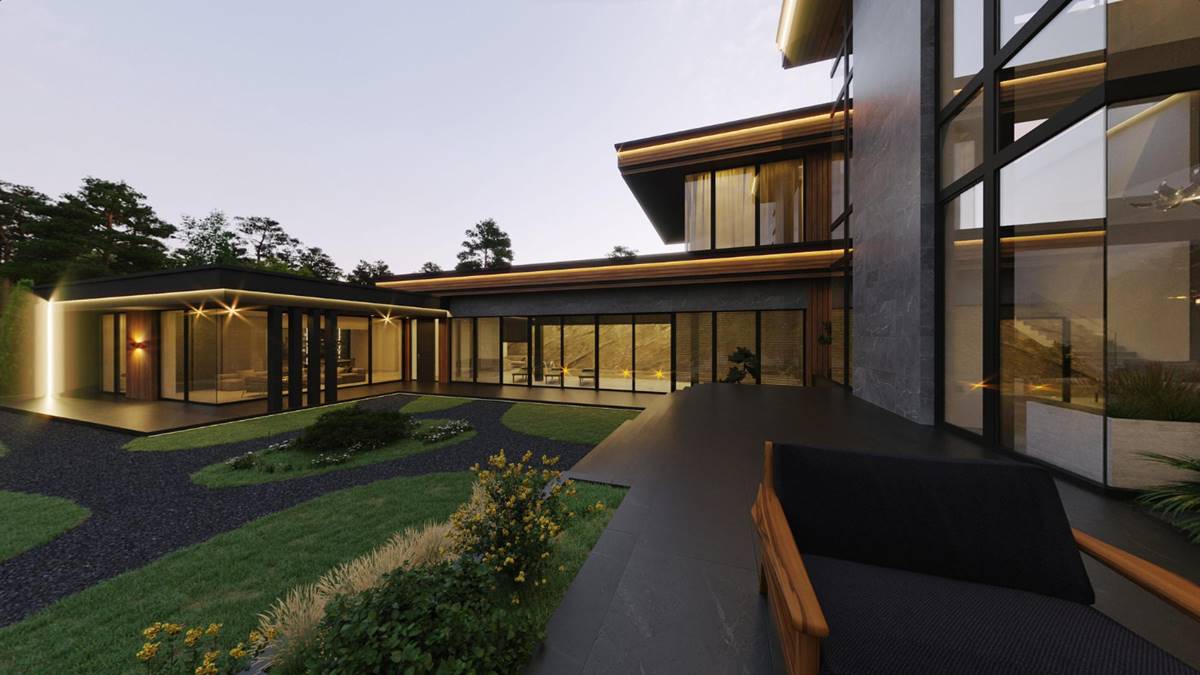Modern architecture has always been about more than just aesthetics. The great movements of the 20th century—from Bauhaus minimalism to postmodern experimentation—were driven by the search for harmony between form, function, and human experience. Today, however, a new element has entered the equation: data.
Architecture in 2025 is not only about how a building looks or performs, but also about how it learns, responds, and interacts with the people who inhabit it. Materials, energy systems, and digital intelligence now form a seamless ecosystem—creating structures that are not only efficient, but truly adaptive.
The rise of intelligent materials
Smart materials have become central to the evolution of architecture. These are substances that react to environmental conditions, adjusting automatically to optimize performance.
-
Self-healing concrete can seal its own cracks using bacterial processes, dramatically extending building lifespans.
-
Phase-changing glass tints itself according to sunlight intensity, reducing energy consumption.
-
Adaptive façades open and close to control airflow and temperature without mechanical intervention.
Incorporating these materials allows architects to think less about static design and more about dynamic performance—buildings that respond as living systems do.
Energy: from consumption to communication
Energy management is no longer just a question of efficiency; it’s about dialogue. Buildings now “communicate” with the power grid, drawing energy when it’s abundant and feeding it back when they produce a surplus through solar panels or micro-turbines.
In this way, architecture becomes a participant in the energy ecosystem, not just a consumer. Modern offices and residential complexes increasingly integrate battery storage and smart metering technologies to balance demand and supply in real time.
For architects, this means that designing a building is no longer the final step. It’s the start of an ongoing energy relationship between the structure, its users, and the wider environment.
Data as the new building material
Perhaps the most revolutionary change is invisible: data.
Sensors embedded throughout a building monitor temperature, light, humidity, and occupancy, constantly optimizing performance. Machine learning models adjust ventilation, lighting, and heating patterns based on real user behavior rather than preset schedules.
This data-driven design transforms how spaces are used. A workplace that tracks movement and noise can rearrange lighting and air conditioning for comfort and productivity. Public buildings can analyze visitor flow to improve accessibility and safety.
Data is, in essence, becoming the fourth dimension of architecture—a fluid, living layer that connects materials and energy systems in real time.
Sustainable design: from ambition to automation
The modern architect’s goal is no longer just to design a sustainable building but to create one that sustains itself. Automation makes this possible.
-
AI algorithms can predict energy demand before it occurs.
-
BIM (Building Information Modeling) systems simulate entire lifecycles—from construction to demolition—reducing waste.
-
Circular design principles encourage reusing components and materials in future projects.
As digital tools merge with ecological awareness, the profession is shifting from reactive problem-solving to proactive eco-innovation.
Human experience at the center
Technology may dominate the conversation, but architecture remains, at its core, a human art. The best modern buildings don’t simply impress with smart systems—they make people feel connected, comfortable, and inspired.
Natural light, tactile materials, acoustic balance, and flexible spaces still define emotional well-being in architecture. Smart systems simply amplify that experience, ensuring comfort without waste. In the ideal scenario, the user doesn’t even notice the technology—it just works, quietly enhancing daily life.
The architect as systems thinker
The role of the architect is evolving rapidly. Designing a building now means orchestrating multiple disciplines—materials science, energy engineering, data analytics, and human psychology.
The architect becomes a systems thinker, a conductor balancing the technical with the emotional. Successful projects are those where technology disappears into experience, and sustainability feels effortless.
The result is not a futuristic fantasy, but a very practical reality: cities and spaces that think, adapt, and endure.
A glimpse into the future
Looking ahead, we can expect even deeper integration between the physical and digital. Buildings will increasingly operate as living organisms—analyzing their own health, interacting with infrastructure, and evolving through software updates.
Urban landscapes may soon consist of self-regulating districts where architecture, energy, and data flow together in perfect equilibrium. The line between design and intelligence will blur completely.
Source: https://hostsobserver.com/modern-architecture-today-when-materials-energy-and-data-design-together/
Website: https://hostsobserver.com
